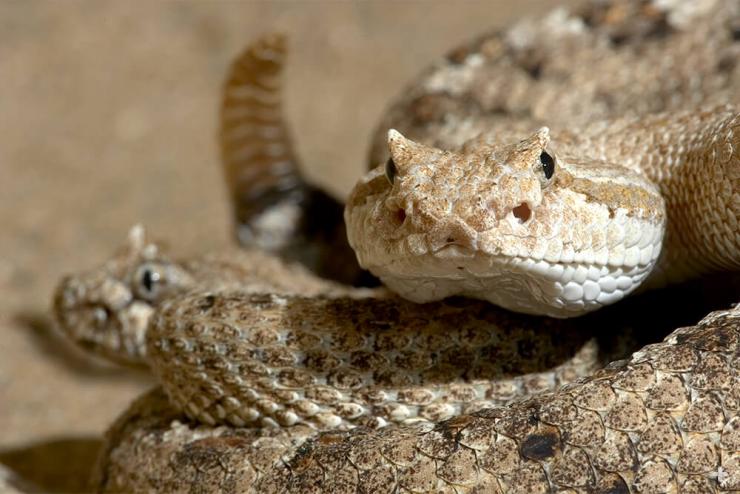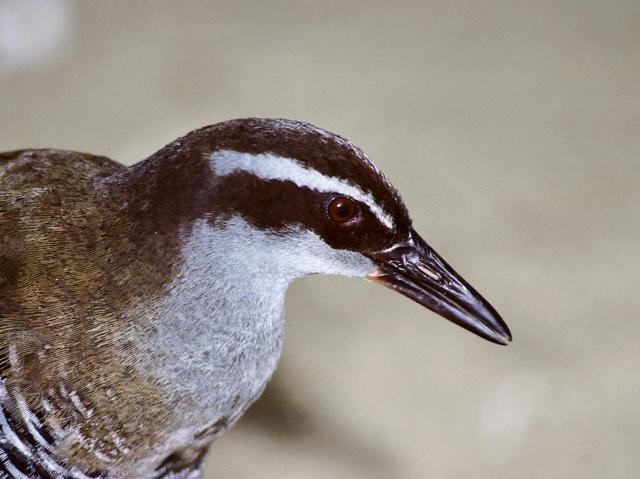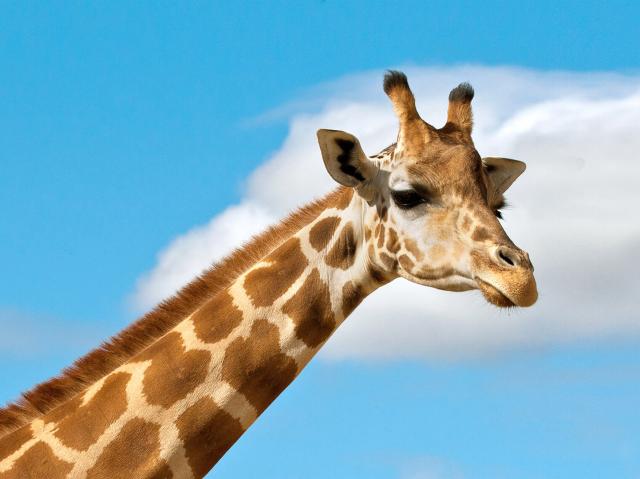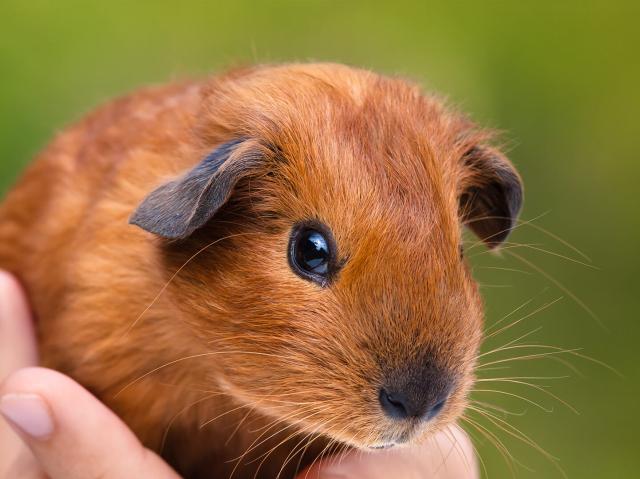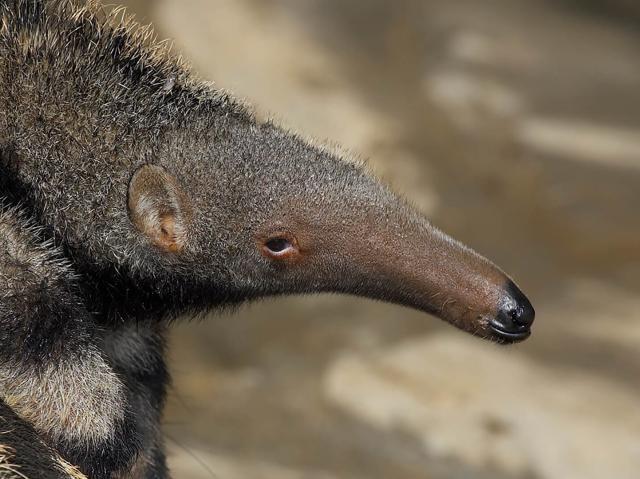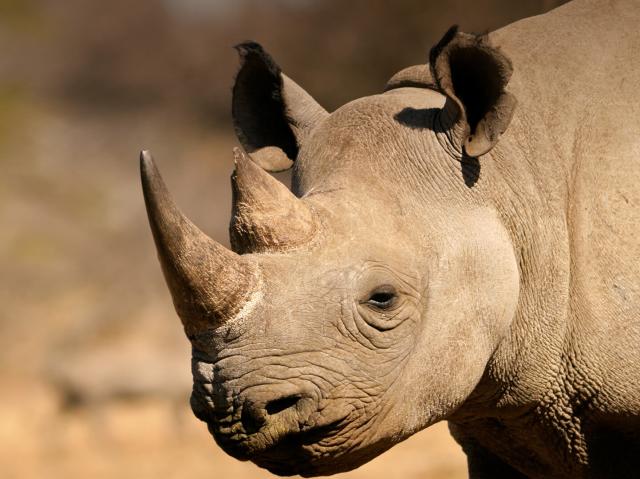
Rattlesnake

- CLASS: Reptilia (Reptiles)
- ORDER: Squamata
- FAMILY: Viperidae
- GENERA: Crotalus and Sistrurus
- Species: About 30

ABOUT
Beautiful and misunderstood: Rattlesnakes! The word alone fills most people with fear and anxiety, because they have no experience in dealing with snakes. Yet we should learn to appreciate the rattlesnake as one of the most efficient and specialized predators on Earth. Many rattlesnakes struggle to survive as humans move in on their habitat. And some people feel that the only good rattlesnake is a dead one! Read on to discover cool stuff about rattlesnakes and why we need them.
Rattlesnakes are known for their relatively heavy bodies and diamond-shaped heads. They are considered to be the newest or most recently evolved snakes in the world. Rattlesnakes have either a rattle or a partial rattle made of interlocking rings, or segments of keratin, the same material our fingernails are made of. When vibrated, the rattle creates a hissing sound that warns off potential predators. It is an extremely effective and highly evolved predator-avoidance system. Another rattlesnake characteristic is the "pit" on each side of the head, which is a heat-sensitive organ for locating prey.
We’re afraid of being bitten, but remember that snakes bite to defend themselves. If sensing danger, they first try to escape or hide, so be sure to stay out of their way. Different rattlesnake species react in different ways: some remain still, relying on their cryptic coloration for camouflage, while others just glide away silently. If this isn’t an option, they hiss, rattle their tail, and puff up their body to warn off an enemy. The rattle protects intruders from being bitten, while at the same time protects the snake from being stepped on!
Most snakes give a warning before they bite, although they may strike quickly if they are startled during shedding, mating, or giving birth. When out walking in heavy brush or rocky areas, watch where you step or put your hands! Amazingly, rattlesnakes are no match for nonvenomous kingsnakes, which are highly resistant to rattlesnake venom; rattlers are a common food item for kingsnakes.
Although California has a number of rattlesnake species, only four of them are found in San Diego County. While rattlesnakes locally may be found from the coast to the desert, each species varies in color and behavior, depending on their habitat. The reason for this variation lies in evolution: these four species have evolved to fill different niches in different habitats, which limits competition for food.

Colorado desert sidewinder: Found only in the desert, this is our smallest species. It grows to just over 2 feet (0.6 meters) as opposed to 3 or 4 feet (0.9 to 1.2 meters) in the other 3 local species. This rattler occurs the farthest south, from southeastern California, southeastern Arizona, and down the east coast of northern Baja California, Mexico. It has horns just above the eyes that aid in keeping the eyes from being scratched while burrowing.
The sidewinder gets its name from the way it moves: loops of the body are thrown forward and pressed into the sand so that the snake glides sideways, with only two parts of the body touching the ground at any given time—a special adaptation for living on hot sand or gravel.
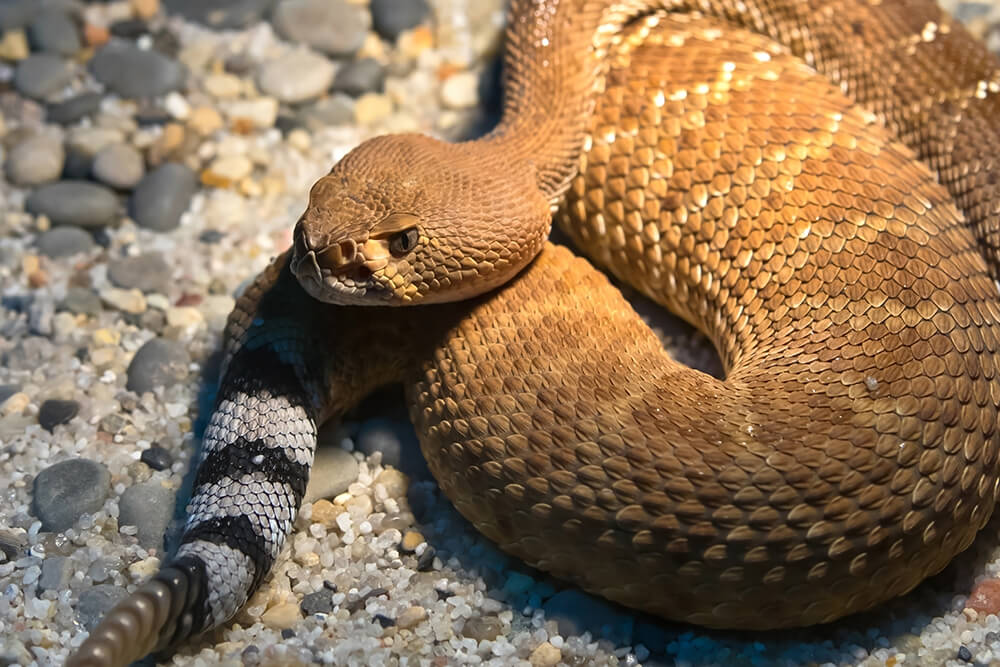
Red diamond rattlesnake: San Diego’s largest snake species may be found from San Bernardino and Riverside counties down into Baja California. It is named for its brick red color, but some desert individuals may be pinkish. They all have black-and-white tail bands found just before the rattle. Red diamonds are common in areas with little development, especially near rocky outcroppings. Food consists of anything from small lizards to rabbits and squirrels.

Southern Pacific rattlesnake: Also called a western rattlesnake, this is the most common species in San Diego and may be found near housing developments, parks, and even the beach. It typically has dark blotches of gray, greenish or yellowish gray, or black. Its range is from coastal Southern California to northwestern Baja California, and is commonly found on prairies or sage scrub/grassland areas, especially near rocky outcroppings. Like the red diamondback, the southern Pacific rattlesnake feeds mainly on reptiles and mammals, as well as birds.
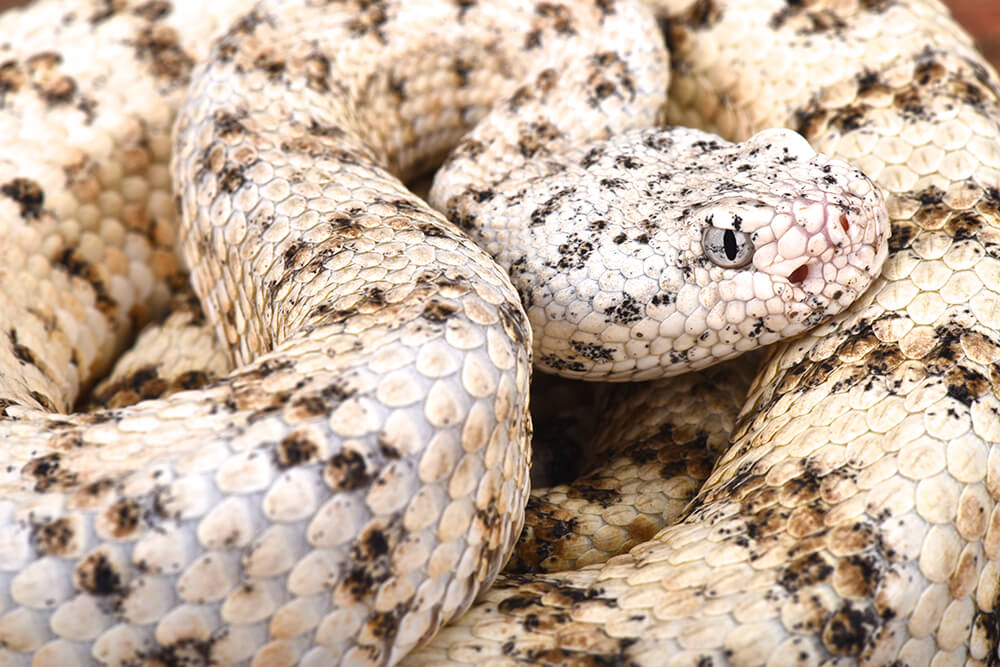
Southwestern speckled rattlesnake: This species is the least seen in Southern California because it tends to be shy and avoids populated areas. It is typically pale gray or yellow-gray. From the foothills of the Cuyamaca mountains to the peaks and down into the deserts to the east, its preferred habitat is granite rocky outcroppings, and it has amazing camouflage, blending in perfectly with the color of the rocks where it lives! It can range into southern Nevada, western Arizona, and into northern Baja California.
Always be alert when out hiking, and move away if you see a rattlesnake. Never try to kill a snake: many bites occur when attempting to kill a rattlesnake. Snakes should never be killed just because you encounter them on a walk. But if a rattlesnake bites you, you must go immediately to a hospital. Never try "home remedies" (none are effective), and do not ignore the bite, just get medical attention. Having a cellphone with an emergency contact number with you when on hikes, or anywhere rattlesnakes may occur, could be your first step in managing a snakebite situation.
While few snakebites are fatal to people, venomous snakebites should never be left untreated.
HABITAT AND DIET
New World snakes: Rattlesnakes occupy diverse habitats within the United States and south into Mexico and South America. An adaptable snake, rattlers are found in the desert sand dunes of the southwest, the swamplands of the southeast, and the meadows of the northeast, anywhere from sea level up to more than 11,000 feet. And while there are about 30 currently recognized rattlesnake species ranging in size from 1 to 7 feet, Arizona is home to 13 of them, more than any other state.
Rocky crevices, burrows, and leaf litter all make safe dens for rattlesnakes. Those in more temperate zones, where temperatures can drop to 40 degrees Fahrenheit (4 degrees Celsius), may hibernate in the winter. They emerge from their den in the spring to warm up. As cold-blooded creatures, rattlers depend on the sun to warm them up to optimal temperatures and shady places to cool off. Often, a flat surface like a paved road attracts a snake seeking to sun itself.
Rattlesnakes may be more active at night in the summer in areas where daytime temperatures exceed 90 degrees Fahrenheit (32 degrees Celsius), resting in the shade during the day to digest their food.
Rattlesnakes only look for food when they’re hungry. An adult rattler goes about two weeks between meals, on average, depending on how large its last meal was. Younger rattlesnakes eat more often, about once a week.
At dusk, a hungry rattlesnake may begin to move and look for a good spot to ambush a mouse, rat, ground squirrel, or rabbit, its main food items. Its forked tongue flicks in and out, picking up odor particles from the ground and passing them over a special smelling organ in the roof of the mouth called the Jacobson’s organ. Then the snake lies in wait until the rat or mouse comes along.
Even in total darkness, prey are visible to a rattlesnake. This is because the heat-sensitive pits on each side of the snake’s head detect the prey’s heat, and nerves transmit this information to the same area in the brain that receives optic nerve impulses. It is accurate to say the rattlesnake "sees" a heat image of its prey, and it can strike in darkness if the prey is even slightly warmer than its background.
The rattlesnake's fangs inject venom into its prey when it strikes at a speed of about five-tenths of a second! The species and habitat of the snake determines how potent its venom is, and potency can vary within a single species. Venom is delivered from glands above the upper jaw, through the venom duct and out the enlarged, hollow teeth, known as fangs. The rattlesnake can control the amount of venom it releases. After the strike, the rattler flicks its forked tongue in and out, picking up odor particles from the ground to help it locate the trail of the dying prey in the dark.
Rattlesnake venom has been the focus of many scientific studies worldwide and has many significant pharmacological uses. For example, the protein crotamine, present in the venom of the Brazilian rattlesnake, has an analgesic action 30 times more potent than morphine but without the addicting side effects.
FAMILY LIFE
No eggs laid here! Spring is breeding season for rattlers. Adult female rattlesnakes are ovoviviparous, which means that the egg sacs are incubated within the mother so that the young emerge fully developed. When born, each baby is encased in a little cellophane-like clear wrapper. Shortly after the mother passes it, the baby snake pokes its nose through the thin membrane and takes its first breath of air. Female rattlesnakes only reproduce once every 2 years and carry the eggs inside their bodies for about 90 days.
Young rattlers are almost independent just minutes after they are born. At one to two weeks of age, they shed their skin, and the first segment of their rattle is created (this happens each time they shed their skin). After this first shed, the youngsters generally leave the area of their birth to search for food. This is a dangerous time for the little snakes, as they are easy prey for birds, other snakes, and mammals, and may not be able to find safe dens of their own.
When it’s time to hibernate in the winter, the young may follow their mother’s scent trail and use the same den. Future generations will also use the same den—some have been used for over 100 years!
As they grow, rattlesnakes shed their skin and add to their “rattle.” Segments of the rattle may break off over time, so it is not true that one can tell the age of a rattlesnake by the number of rings, or segments, on its rattle.
AT THE ZOO
Rattlesnakes have been a part of the San Diego Zoo since our earliest days, with most of them from San Diego County. Often, these local rattlers were used to trade with zoos to obtain other reptiles. Laurence Klauber, who was curator of reptiles during the San Diego Zoo’s early years, once said that rattlesnakes “command a sort of fearsome interest, even among people who certainly had no fondness for them.” He lends his name to the banded rock rattlesnake’s scientific name, Crotalus lepidus klauberi, and in 1956, he published the definitive two-volume Rattlesnakes: Their Habits, Life Histories, and Influence on Mankind. Our Klauber-Shaw Reptile House is named in his honor.
In 1948, the first breeding of the Aruba Island rattlesnake in managed care occurred at the Zoo. At one time or another, we have displayed all the rattlesnakes native to the US.
CONSERVATION
Surprisingly, little is known about basic snake reproduction, so in 2006, San Diego Zoo Wildlife Alliance initiated a project to gather reproductive data and develop assisted reproductive technology using local Southern California snakes. The San Diego Zoo Safari Park’s undeveloped land is home to 16 snake species, including 3 rattlesnake species. For over a year, these local rattlesnakes were collected, weighed and measured, and tagged with a small numbered label inserted inside the rattle, closest to the tail. Their reproductive status was assessed before they were released back where they were found.
The data collected represents a significant addition to the body of knowledge on snake reproduction. The techniques of semen collection, cryopreservation, and ovarian ultrasound developed with the help of these rattlesnakes have benefitted conservation efforts for six endangered snake species in Brazil. Ongoing studies at three field sites in that country are generating data on the ecological requirements, health, demographics, and feeding behavior of these rare reptiles.
The Santa Catalina Island rattlesnake Crotalus catalinensis and the Aruba Island rattlesnake Crotalus unicolor are at critical risk, due to the fact that they are each found only on one small island and have been over-collected for the illegal trade market or killed. The San Diego Zoo was the first facility in the world to hatch the Aruba Island rattlesnake in managed care. Some other kinds of snakes are in decline simply because people fear them. The San Diego Zoo is working with the Los Angeles Zoo and Mexico to collect endangered Santa Catalina Island rattlesnakes to learn more about them and help rebuild their population.
By using common sense, we can share our open spaces with rattlesnakes. These beautiful snakes are important to the environment, because they control rodent populations. Let’s protect them and see them as solutions to problems rather than as misunderstood, fearsome snakes that we want to eliminate. Just a little care in where we put our feet when we are out hiking is all that is necessary for us to coexist with this fascinating predator.
By supporting San Diego Zoo Wildlife Alliance, you are our ally in saving and protecting wildlife worldwide.
Sounds
LIFE SPAN
25 years
YOUNG
Gestation: About 90 days
Number of young at birth: 10 to 20
Size at birth: 7 to 15 inches (18 to 38 centimeters) long, depending on species
Age of maturity: 18 months to over 2 years
SIZE
Length: Longest - eastern diamondback Crotalus adamanteus, up to 8 feet (2.4 meters); shortest - twin-spotted rattlesnake Crotalus pricei, less the 12 inches (30.5 centimeters); most are 2 to 4 feet (.6 to 1.2 meters)
Weight: Heaviest - eastern diamondback, 4 to 10 pounds (1.8 to 4.5 kilograms); lightest - ridge-nosed ratlesnake Crotalus willardi, 3 to 4 ounces (85 to 113 grams)
FUN FACTS
A rattlesnake can detect prey that is as little as 1/10 of a degree warmer than its background.
Who would guess that rattlesnakes are good swimmers? They’ve been found several miles out at sea.
The Santa Catalina Island rattlesnake has no rattle, just a small button! It climbs trees and sneaks up on its bird prey, which is easier without a noisy rattle.


